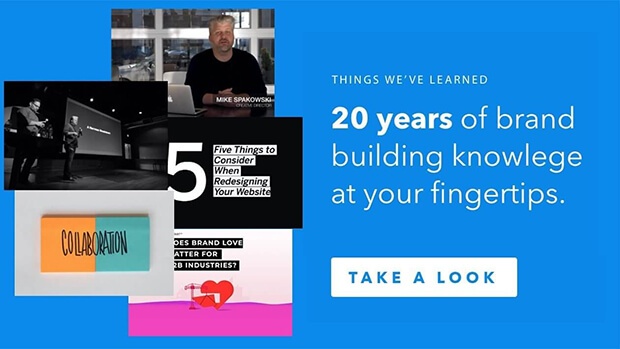Design Against the Competition
In business today, design is more present than ever before. From product design and branding, to razor-sharp focus on UX design and mobile experiences, businesses are using design to create beautiful, thoughtful experiences for their customers. And there’s a very good reason for it.
Beyond its pure aesthetic appeal, design offers something even more appealing for businesses that embrace it as part of their approach to products, customer experience and thinking. Design creates a barrier to competition.
A barrier to competition is anything a company owns or embodies that makes it difficult to compete against in the market. Famed investor Warren Buffet calls it a “business moat,” comparing it to the water that surrounded and protected medieval castles. It discourages and makes it difficult for the competition to come close to you.
Here are just a few ways companies use design to help create barriers to competition:
Design improves sales and customer retention.
Companies are taking a good, long look at the customer experience in their sales process, and are using design to make improvements to it.
By placing themselves in the shoes of their customer during the buying process, businesses can anticipate questions and address any hurdles or objections that someone may come across while making a purchasing decision. What businesses discover during this research can be used to improve and refine the buying experience.
Businesses can use this knowledge to design branded materials and experiences that address these hurdles and objections, guiding the buyer more smoothly through the sales process and ultimately toward a purchase. Brands that do this well are demonstrating understanding and empathy for the customer’s difficult decision, building trust along the way. This is an example of how design thinking, service design and graphic design work together.
The process is simple but important. When customers have a great experience with a brand, it’s much more difficult to get them to consider a competing product or service.
Design reduces time to market.
When a company has strong, consistent design principles and a clear brand in place, they can expand services or product lines much more quickly. There’s less discovery time, because designers and product teams understand the vision of the brand and the role of the new product as an extension of it.
Design that’s built on understanding of your brand and your customers can not only help define what a new product should look like, it can help you decide what the product should be.
Design makes it expensive to compete against you.
A brand isn’t what you say it is. It’s what your customer says it is. The act of branding is creating visual artifacts, experiences and messages that help shape or reinforce customers’ opinions so that they more closely match how the business wants itself to be perceived.
Building brand equity takes time, energy and continuous effort. But it’s a little easier if you’re offering something that feels new. To unseat a competitor, it isn’t enough to simply make a brand, product, design or experience that’s marginally different. You have to position yourself as being worthy of a new category, and a new position in your customers’ minds.
It’s about creating something that is different from what’s been done before.
Uniquely positioned brands are difficult to compete against. They’ve created a natural barrier to competition. When brands in the same category are positioned too similarly, marketing becomes a volume game, with companies battling for the customers’ attention and attempting to outdo each other on price, or with one-off sales materials and gimmicks. Design can make the difference.
Barriers to competition are among the most valuable assets a business can have, and design is one of the strongest ways to help build them. The question is, can businesses use design and design thinking to make sure they’re on the right side of the moat?



